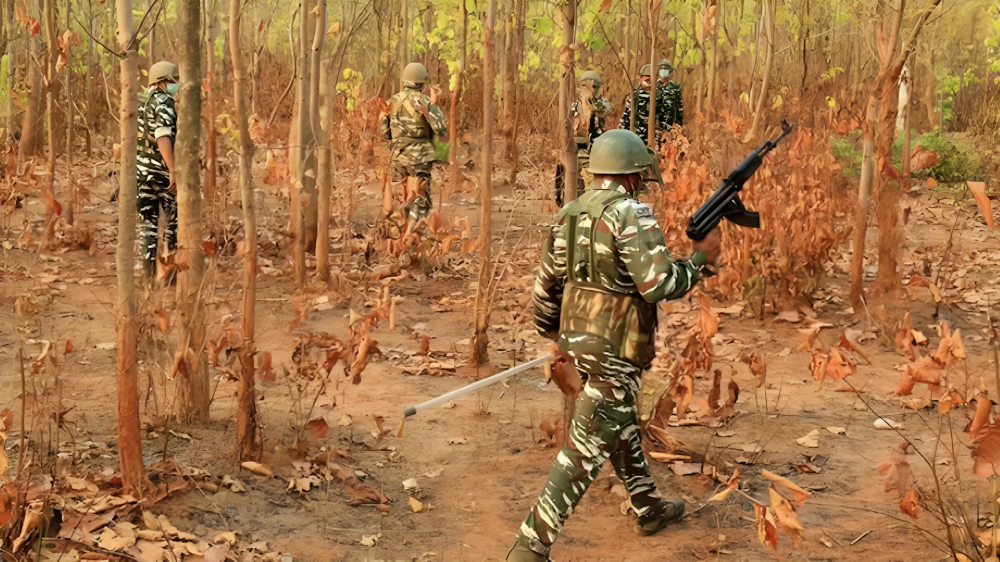In a landmark victory for India’s counterinsurgency campaign, security forces have concluded Operation Black Forest, a 21-day operation that eliminated 31 Naxalites, including top commanders, in the dense Karreguttalu Hill (KGH) region along the Chhattisgarh-Telangana border. Authorities have hailed the operation as the largest and most successful strike against Naxal forces in the nation’s history.
The neutralized insurgents—who carried a collective bounty of ₹1.72 crore—belonged to a Unified Command of the People’s Liberation Guerrilla Army (PLGA) Battalion, the Central Regional Committee (CRC), and the Telangana State Committee. The operation dismantled their heavily fortified hideouts in the 60-km-long KGH forest, once deemed impenetrable due to its treacherous terrain and strategic significance.
From April 21 to May 11, the joint forces—comprising over 20,000 personnel from the CoBRA, Special Task Force (STF), District Reserve Guard (DRG), and Central Armed Police Forces (CAPFs)—destroyed 214 hideouts and bunkers, recovered 450 IEDs, 818 BGL shells, 899 bundles of detonator cords, and seized 35 automatic and semi-automatic weapons.
In addition, the troops uncovered and dismantled four technical units producing weapons and explosives, and seized over 12,000 kg of rations, medicines, and logistical supplies. Despite extreme conditions, including temperatures exceeding 45°C, no security personnel fatalities were reported. Eighteen troops sustained injuries, mostly due to IED blasts, but all are currently stable and under treatment.
Union Home Minister Amit Shah praised the operation, declaring that Karreguttalu Hill, once a bastion of red terror, now proudly flies the Indian tricolor. He reaffirmed the government’s aim to eliminate Naxalism by March 31, 2026, highlighting the operation as a pivotal moment under Prime Minister Narendra Modi’s leadership.
CRPF Director General Gyanendra Pratap Singh and Chhattisgarh DGP Arun Dev Gautam, addressing a joint press conference, confirmed that 28 of the 31 killed insurgents have been identified, including 16 female cadres in uniform. They emphasized that no previous operation has yielded such a vast haul of explosives and weaponry in a single campaign.
This monumental strike follows a consistent downward trend in Naxal activity. Naxal-affected districts have dropped from 126 in 2014 to 18 in 2025, and violent incidents have declined from 1,080 in 2014 to 374 in 2024. In just the first four months of 2025, 197 Naxalites have been neutralized, while 718 have surrendered, building on the 928 surrenders in 2024. Infrastructure boosts, including 320 new security camps and 555 fortified police stations, have bolstered the state’s presence in vulnerable areas.
Operation Black Forest is now seen as a turning point in India’s internal security history, reflecting a coordinated, intelligence-driven, and technology-aided campaign to reclaim red zones. Officials believe that the momentum generated will be crucial in dismantling the last remnants of Naxal infrastructure and achieving a Naxal-free India.













